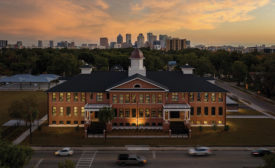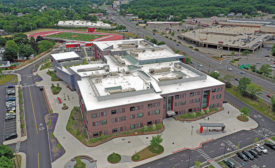Home » K-12 Construction
Articles Tagged with ''K-12 Construction''
New England Best Projects
Best Projects
Award of Merit, K-12 Education: Pace Academy Kam Memar Lower School Addition and Renovation
October 31, 2022
Southwest Best Projects
Award of Merit, K-12 Education: John S. McCain III Elementary School
Read More2022 California Best Projects
Award of Merit – K-12 Education: Fremont High School Transformation
Read MoreDigging Deeper | K-12 Education
Team Uses Integrated Design-Build for New Greeley West High School
The new Greeley West High School features bright, daylit spaces and is being built using highly integrated design-build collaboration
Read More
The latest news and information
#1 Source for Construction News, Data, Rankings, Analysis, and Commentary
JOIN ENR UNLIMITEDCopyright ©2024. All Rights Reserved BNP Media.
Design, CMS, Hosting & Web Development :: ePublishing












